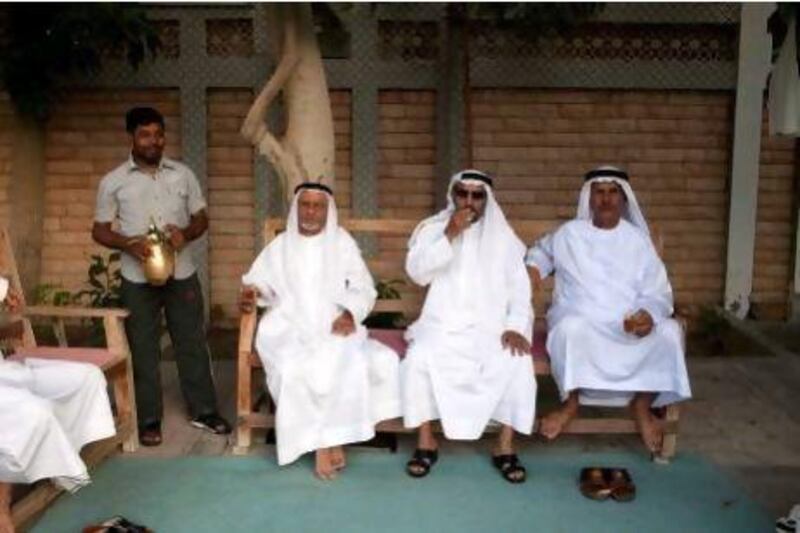ABU DHABI // It's an idyllic, textbook image of a close-knit community, with people of all ages and occupations gathering outside to socialise and have fun.
The inhabitants of Al Za'ab say it has always been that way.
It takes just a brief foray into this residential hamlet opposite Sheikh Khalifa Medical City to feel as if you are part of the action.
On one block, two elderly men sit in a small outdoor majlis deep in conversation, steps away from a playground heaving with excitable children jumping and screaming.
A maid escorts two young ones dressed in matching clothes to their home, while behind them a teenager performs stunts on his quad bike.
Further along, 10 women dressed in abayas are holding their own outdoor majlis. Across the road a woman delivers a plate of food to her neighbour while a man performs exercises on a stretch of grass.
Al Za'ab was named after the Al Za'abi tribe, who arrived in the capital in 1969. They moved from Al Hamra Island in Ras Al Khaimah, which was also known as Al Za'ab.
The men were the first to arrive, with the rest of the tribe following in 1971 when Sheikh Zayed, founding President of the UAE, granted them the land and named it in their honour.
"Sheikh Zayed was very generous with them and visited them personally," says Obeid Al Za'abi, 58, who has lived in the area since he was 15.
"At first the tribe stayed in a special guest area and then he granted them Al Za'ab. The area was a desert back then so when the tribe moved they stayed in tents, but then Sheikh Zayed ordered the building of houses for each family."
Maryam Al Za'abi, 27, an engineer and mother of two, has lived in the area her entire life.
"I remember when I was 6 and my mother went to perform Haj, our neighbour Umm Khalid would pass by every day at noon to check on our needs," Maryam says. "She also took us Eid shopping to buy Eid items that our mother forgot to buy for us before she left. That is how people were with each other."
She describes the area as calm and cosy, where people "work in one hand and share one heart".
"For instance, if a man passes by and sees children playing, he takes them with him to the mosque to pray," Maryam says.
Men and women gather daily in separate majlises where they share food and socialise.
Al Za'ab was once populated exclusively by members of the tribe, but many have since moved elsewhere and rented out their houses, which has brought an influx of nationalities and backgrounds to the neighbourhood.
But while the tribe might not be quite as tightly knit as it once was, Mona Al Zaabi, 30, a programme officer at the Urban Planning Council who has lived her whole life with her family in Al Za'ab, says the younger generation has been making efforts to recapture the past.
Recently, the young men of the tribe gathered with their elders to carry out the tribe's traditional rezeef dance.
"It was a nice gesture," says Mona. "Za'abis are known by the rezeef."
@ For more in this series, go to thenational.ae/communityroots







